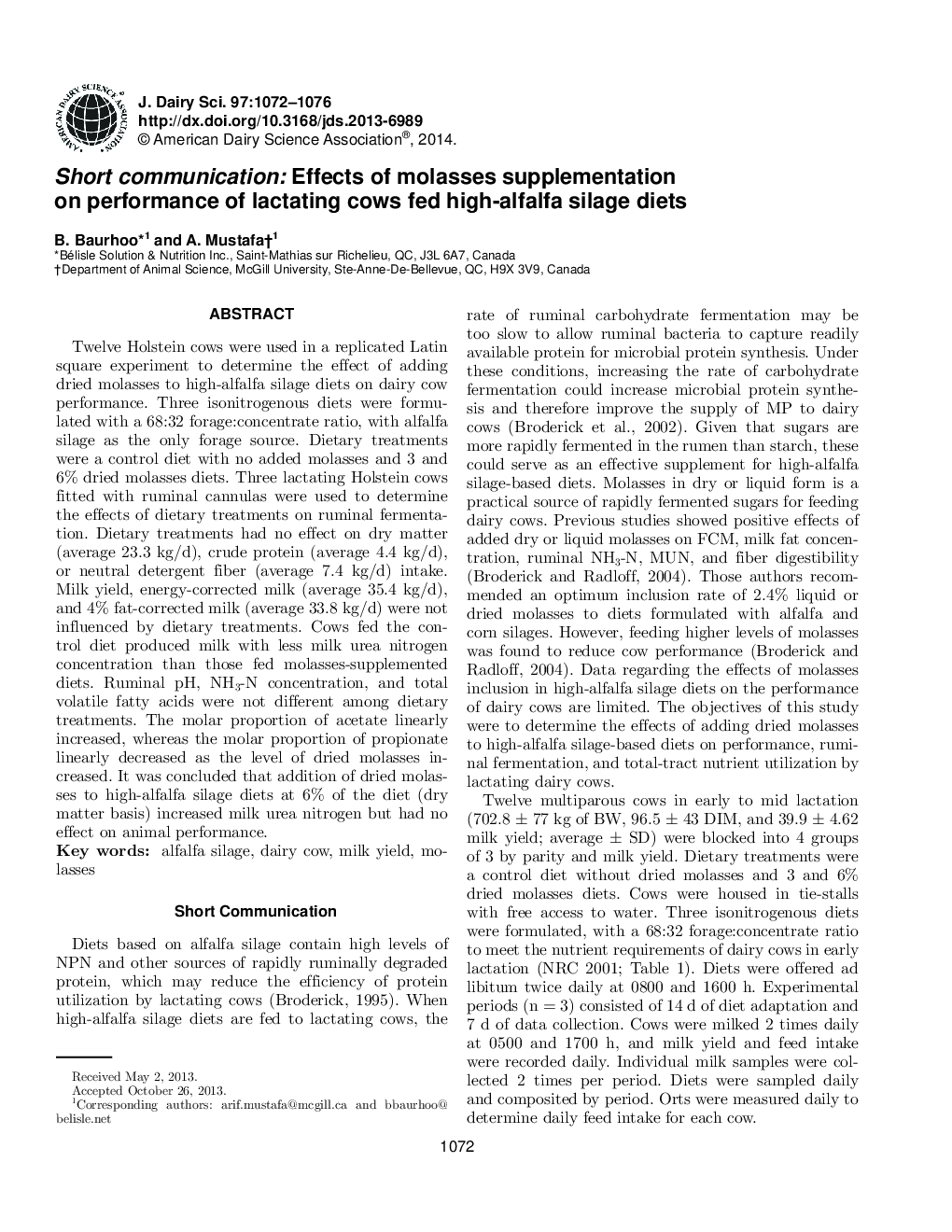| Article ID | Journal | Published Year | Pages | File Type |
|---|---|---|---|---|
| 10977075 | Journal of Dairy Science | 2014 | 5 Pages |
Abstract
Twelve Holstein cows were used in a replicated Latin square experiment to determine the effect of adding dried molasses to high-alfalfa silage diets on dairy cow performance. Three isonitrogenous diets were formulated with a 68:32 forage:concentrate ratio, with alfalfa silage as the only forage source. Dietary treatments were a control diet with no added molasses and 3 and 6% dried molasses diets. Three lactating Holstein cows fitted with ruminal cannulas were used to determine the effects of dietary treatments on ruminal fermentation. Dietary treatments had no effect on dry matter (average 23.3Â kg/d), crude protein (average 4.4Â kg/d), or neutral detergent fiber (average 7.4Â kg/d) intake. Milk yield, energy-corrected milk (average 35.4Â kg/d), and 4% fat-corrected milk (average 33.8Â kg/d) were not influenced by dietary treatments. Cows fed the control diet produced milk with less milk urea nitrogen concentration than those fed molasses-supplemented diets. Ruminal pH, NH3-N concentration, and total volatile fatty acids were not different among dietary treatments. The molar proportion of acetate linearly increased, whereas the molar proportion of propionate linearly decreased as the level of dried molasses increased. It was concluded that addition of dried molasses to high-alfalfa silage diets at 6% of the diet (dry matter basis) increased milk urea nitrogen but had no effect on animal performance.
Related Topics
Life Sciences
Agricultural and Biological Sciences
Animal Science and Zoology
Authors
B. Baurhoo, A. Mustafa,
